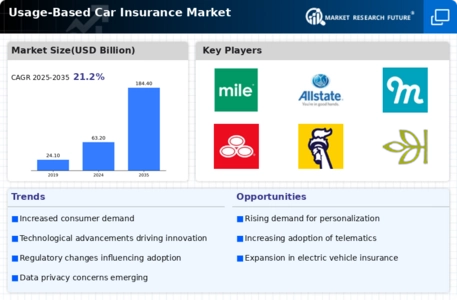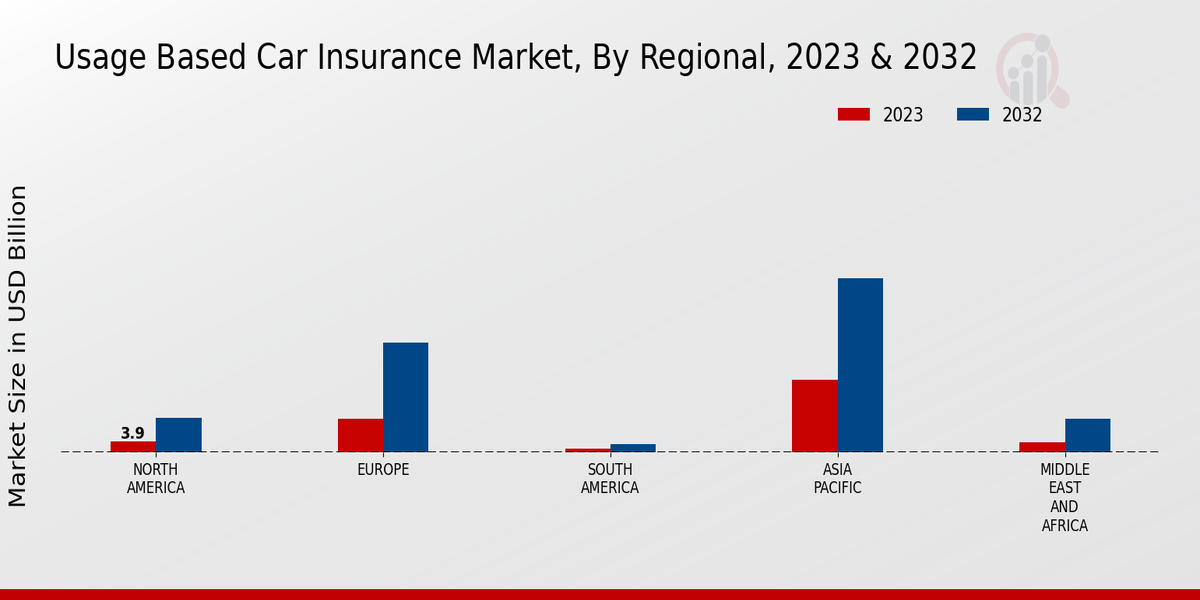Market Growth Projections
The Global Usage-Based Car Insurance Market Industry is poised for substantial growth, with projections indicating a market size of 63.2 USD Billion in 2024 and an anticipated increase to 184.4 USD Billion by 2035. This growth trajectory suggests a compound annual growth rate of 10.23% from 2025 to 2035. Such figures highlight the increasing adoption of usage-based insurance models as consumers and insurers alike recognize the benefits of data-driven approaches. The market's expansion is likely to be fueled by technological advancements, regulatory support, and evolving consumer preferences, positioning it as a dynamic segment within the broader insurance landscape.
Technological Advancements
The Global Usage-Based Car Insurance Market Industry is experiencing a surge due to rapid technological advancements. Innovations in telematics and mobile applications enable insurers to collect real-time driving data, which informs risk assessment and premium pricing. This data-driven approach not only enhances customer engagement but also promotes safer driving behaviors. For instance, companies are increasingly utilizing GPS and onboard diagnostics to monitor driving patterns, leading to personalized insurance plans. As a result, the market is projected to reach 63.2 USD Billion in 2024, reflecting a growing trend towards data-centric insurance solutions.
Emerging Markets and Urbanization
Emerging markets are becoming increasingly relevant to the Global Usage-Based Car Insurance Market Industry, driven by urbanization and rising vehicle ownership. As urban populations grow, the demand for innovative insurance solutions that cater to diverse driving environments intensifies. Usage-based insurance models are particularly appealing in densely populated areas, where driving behavior can vary significantly. Insurers are capitalizing on this opportunity by tailoring their offerings to meet the unique needs of urban drivers. This trend is expected to contribute to a compound annual growth rate of 10.23% from 2025 to 2035, reflecting the market's potential in these regions.
Regulatory Support and Incentives
Regulatory frameworks are evolving to support the Global Usage-Based Car Insurance Market Industry, fostering an environment conducive to growth. Governments are increasingly recognizing the benefits of usage-based insurance in promoting road safety and reducing accidents. As a result, some jurisdictions offer incentives for insurers to adopt telematics-based models. This regulatory support not only encourages innovation but also enhances consumer trust in usage-based products. Such initiatives may lead to a broader acceptance of these insurance models, potentially driving market expansion as insurers align with regulatory expectations.
Consumer Demand for Personalization
There is a notable shift in consumer preferences towards personalized insurance products within the Global Usage-Based Car Insurance Market Industry. Customers increasingly seek tailored policies that reflect their individual driving habits and risk profiles. This demand for customization drives insurers to adopt usage-based models, allowing for premiums that align more closely with actual driving behavior. For example, drivers who exhibit safe driving patterns may benefit from lower premiums, incentivizing responsible behavior. This trend is expected to contribute to the market's growth, with projections indicating a rise to 184.4 USD Billion by 2035.
Increased Awareness of Safe Driving
The Global Usage-Based Car Insurance Market Industry benefits from heightened awareness of safe driving practices among consumers. As road safety campaigns gain traction, drivers are more inclined to adopt insurance products that reward safe behavior. This awareness translates into a willingness to engage with usage-based insurance, where premiums are directly linked to driving habits. For instance, insurers may offer discounts for drivers who consistently demonstrate safe driving patterns. This trend is likely to bolster market growth, as safer driving not only reduces claims but also enhances the overall appeal of usage-based insurance.














